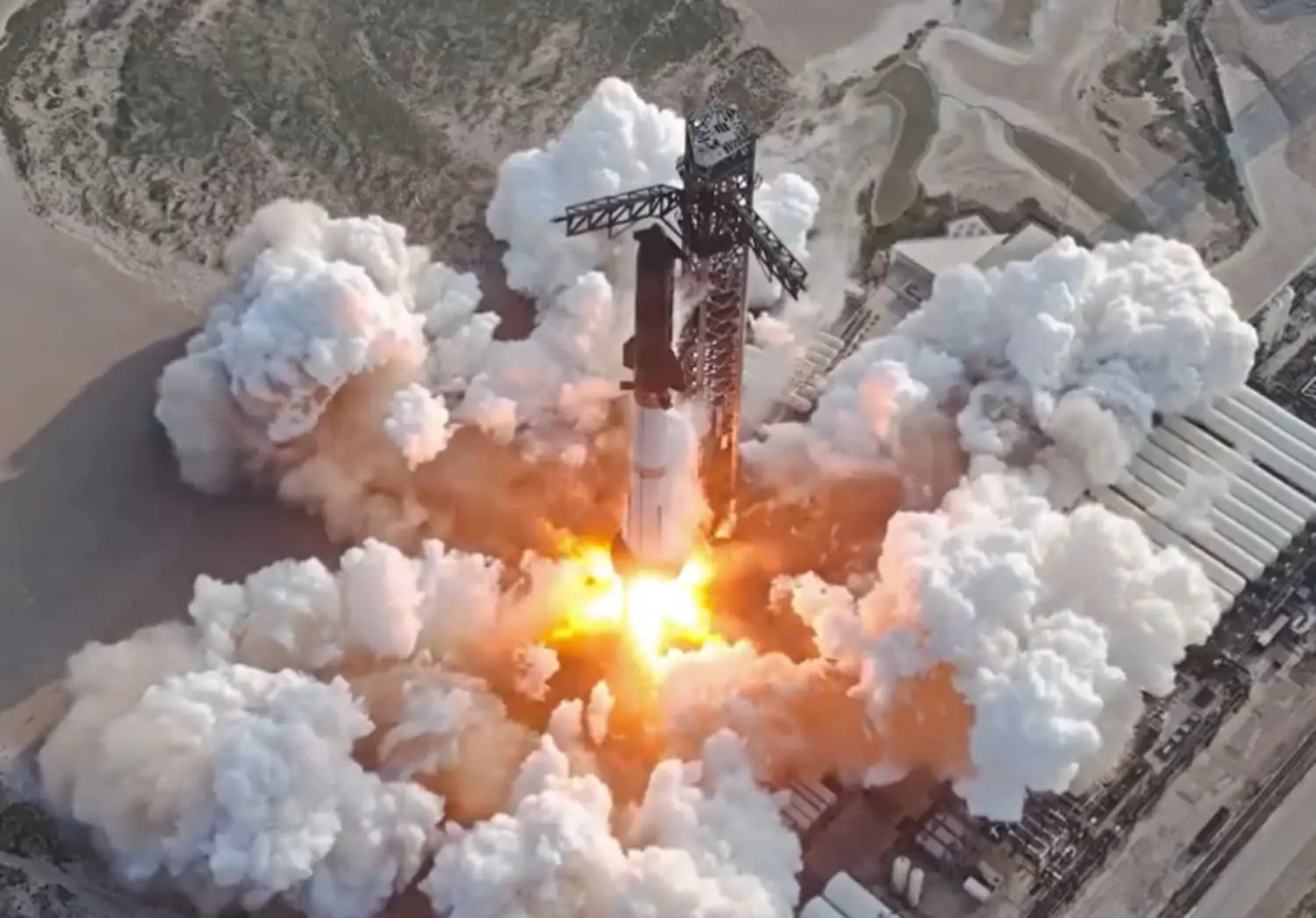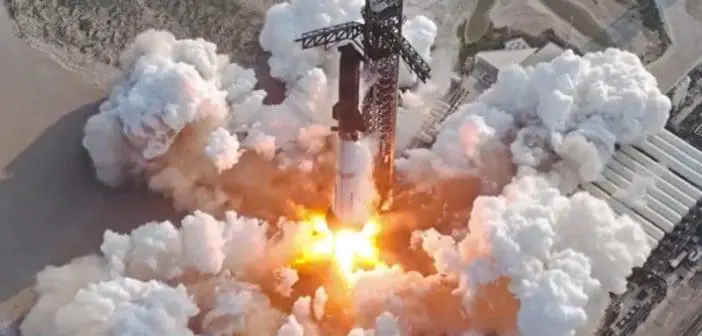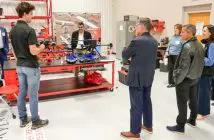
Elon Musk says this week’s Starship launch was a big improvement over the previous eight launches despite the spacecraft breaking up less than one hour into the flight.
“Starship made it to the scheduled ship engine cutoff, so big improvement over last flight! Also, no significant loss of heat shield tiles during ascent,” he posted on X.
“Leaks caused loss of main tank pressure during the coast and re-entry phase. Lots of good data to review. Launch cadence for the next three flights will be faster, at approximately one every three to four weeks.”
The Tuesday evening lift-off from SpaceX’s Starbase headquarters in Boca Chica, Texas, went smoothly, and the vehicle flew far further than the previous missions, which all exploded shortly after launching. Shortly after lift-off, controllers described the vehicle as “coasting through space.” The same controllers lost contact with the upper-stage vehicle less than ten minutes after lift-off during the seventh test flight in January and its eighth test flight in March.
First successful reuse of Super Heavy booster
This week’s launch was the first time SpaceX reused a Super Heavy booster, and pushing the booster to its limits was among the mission’s objectives. The booster performed a full-duration ascent burn and successfully separated from Starship’s upper stage in a hot-staging manoeuvre.
However, as it approached its designated splashdown area in the Gulf of Mexico, contact was lost shortly after the landing burn started when it experienced “a rapid unscheduled disassembly.”
Starship’s upper stage continued its flight. SpaceX said it had implemented lessons from the eighth flight test, including additional preload on key joints, a new nitrogen purge system, and improvements to the propellant drain system.
They say during the so-called coasting stage, several in-space objectives were planned, including the first payload deployment from Starship and a relight of a single Raptor engine. But the eight Starlink simulated satellites could not be deployed because Starship’s payload bay door would not open.
An attitude control error prevented the Raptor engine relit from happening, and therefore, the upper stage could not get into the correct position for re-entry. An automated saving process to vent the remaining pressure to better position Starship then occurred, but mission control lost contact 46 minutes after launching.
Something of a win for SpaceX
While not confirmed, it is reported that a propellant leak or engine failure in the upper stage caused a spin during re-entry, causing the spacecraft to break up.
“With a test like this, success comes from what we learn, and today’s test will help us improve Starship’s reliability,” reads a SpaceX statement.
“Data review is underway, and new improvements will be implemented as work begins to prepare the next Starship and Super Heavy vehicles for flight,” it continues.
Despite the eventual loss of the Starship, the mission could be considered something of a win for SpaceX. The Super Heavy booster performed its eighth reliable ascent burn, and a booster was reused for the first time. Meanwhile, the vehicle survived the second-stage engine cutoff stage, unlike previous missions.
“Developmental testing by definition is unpredictable, but every lesson learned marks progress toward Starship’s goal of enabling life to become multi-planetary,” the SpaceX statement noted.





